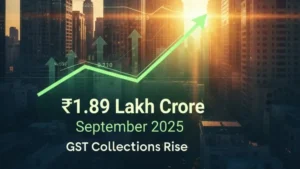In a historic move, Bangladesh’s central bank has decided to allow its currency, the taka, to float freely for the first time. The decision comes in response to demands from the International Monetary Fund (IMF) and aims to unlock additional funds from a $4.7 billion loan program. While Bangladesh is not heavily indebted, the country joins a growing list of nations, including Pakistan, Egypt, and Lebanon, that have opted to loosen control over their local currencies to secure financing from the Washington-based lender.
Benefits of a Market-Driven Exchange Rate Regime
The new market-driven exchange rate regime is expected to bring greater transparency and efficiency to foreign exchange transactions, benefiting businesses, individuals, and the overall economy. Despite concerns of depreciation, the central bank does not anticipate a significant decline in the value of the taka, which has already experienced a slight 5% decrease this year.
Impact on Financial Markets
Following the announcement, the taka experienced a decline of up to 0.9% against the dollar. However, the broader index of the Dhaka Stock Exchange recorded a notable increase of up to 0.3%, the largest gain since June 7. This positive movement reflects the potential for a looser currency regime to bolster Bangladesh’s reserves by making its exports more attractive.
Transition and Future Outlook
Since gaining independence in 1971, Bangladesh has relied on fixed exchange rates to manage volatility and ensure affordable imports. With the adoption of a unified exchange rate regime between the taka and the dollar (or any other foreign currency), the country aims to bridge the gap between formal and informal markets. From July 1, the central bank will cease selling foreign exchange at a discounted rate, and by the third quarter of 2023, all international transactions will be based on the new exchange rate structure.
Financial Considerations
Bangladesh’s central bank has already sold approximately $13 billion in the current fiscal year, ending on June 30, due to increased demand for foreign currency. The government received the first installment of $476 million from the IMF loans in February, with the second tranche expected in November. Prime Minister Sheikh Hasina has expressed confidence in her country’s ability to repay the loan, emphasizing that the IMF provides assistance to nations capable of meeting their financial obligations.
Moody’s Downgrade and Inflation Concerns
In a recent development, Moody’s Investors Service downgraded Bangladesh’s ratings to B1 from Ba3, citing weakened economic conditions and heightened external vulnerability and liquidity risks. The central bank, however, has downplayed the impact, noting that the country has not issued sovereign bonds, which would be directly affected by the downgrade. Addressing concerns about inflation, Bangladesh aims to achieve a growth target of 7.5% in the upcoming fiscal year, starting July 1, and seeks to graduate from being a least developed country. To manage inflation, the central bank plans to implement a tight monetary policy for the first half of the new fiscal year, adjusting interest rates accordingly.
Key Points About Different Kinds of Exchange Rate Regimes:
Free and Floating Currency:
-
Definition: A free and floating currency refers to a currency whose exchange rate is determined by market forces, such as supply and demand, without any interference from the central bank or government.
- Market Forces: The exchange rate of a free and floating currency fluctuates based on various factors, including economic indicators, interest rates, inflation, trade balances, and investor sentiment.
- Flexibility: With a free and floating currency, the exchange rate can adjust rapidly to reflect changing market conditions, which allows for greater flexibility in international trade and investment.
- Transparency: The market-driven exchange rate regime provides greater transparency and efficiency in foreign exchange transactions, benefiting businesses, individuals, and the overall economy.
Managed Currency:
- Definition: A managed currency refers to a currency whose exchange rate is influenced by the central bank or government within certain boundaries, although it may still exhibit some degree of flexibility.
- Central Bank Intervention: In a managed currency system, the central bank actively intervenes in the foreign exchange market to influence the exchange rate. It may buy or sell its currency, implement capital controls, or use other monetary tools to manage the currency’s value.
- Exchange Rate Band: A managed currency system may involve setting a target range or band within which the exchange rate is allowed to fluctuate. The central bank intervenes when the exchange rate approaches the boundaries of this range.
- Policy Objectives: Governments may choose to manage their currency to achieve specific policy objectives, such as promoting export competitiveness, maintaining price stability, or managing external debt.
Controlled Currency:
- Definition: A controlled currency, also known as a fixed or pegged currency, is a currency whose value is fixed or pegged to another currency, usually a major reserve currency like the U.S. dollar or the euro.
- Exchange Rate Stability: In a controlled currency regime, the central bank or government maintains a fixed exchange rate by actively buying or selling its currency to ensure that it remains within the established pegged rate.
- Import Stability: A controlled currency regime can help stabilize import prices, as businesses can plan their transactions based on a predictable exchange rate. This can be particularly important for countries heavily reliant on imports.
-
Reduced Currency Volatility: By pegging the currency to a more stable foreign currency, a controlled currency system aims to reduce exchange rate volatility and provide a stable environment for trade and investment.
Find More International News Here




 World Bank Ups India’s FY26 Growth Estim...
World Bank Ups India’s FY26 Growth Estim...
 Navratri 2025 Sales Hit Decade-High as G...
Navratri 2025 Sales Hit Decade-High as G...
 GST Collections Rise to ₹1.89 Lakh Crore...
GST Collections Rise to ₹1.89 Lakh Crore...

